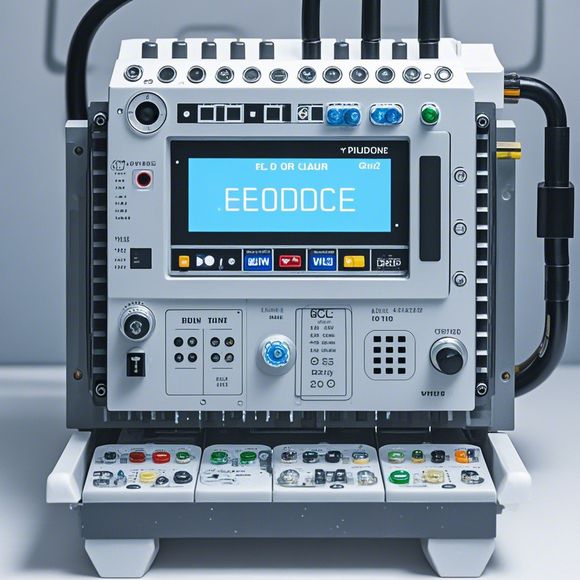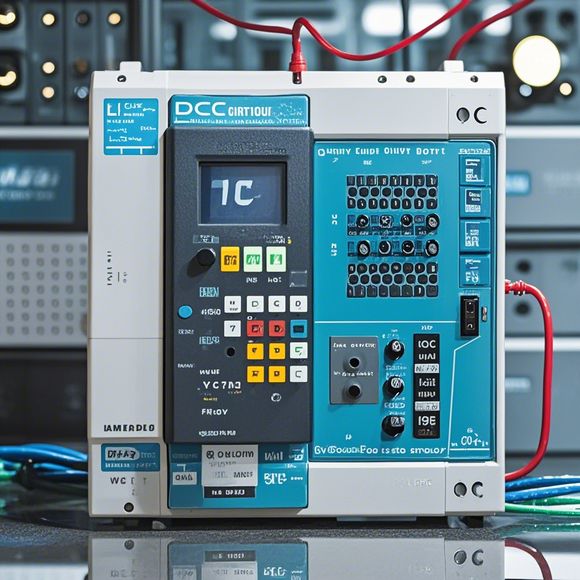Understanding Programmable Logic Controllers (PLCs)
Introduction:
In the world of manufacturing and industrial automation, Programmable Logic Controllers (PLCs) play a crucial role in ensuring efficient and reliable production processes. These controllers are designed to handle complex tasks such as monitoring and controlling machines, automating workflows, maintaining safety standards, and managing data flow. In this guide, we'll explore the working principles of PLCs, their components, and how they integrate within various industries.

PLCs are digital computers with programmable logic that can be used to control various industrial devices. They are designed to work independently or in conjunction with other systems to achieve specific goals. PLCs are programmed using ladder diagrams, which depict the flow of information from input to output. The programming language is usually based on standardized symbols and commands, such as Ladder Diagram notation (LDT), Function Block Diagram (FBD), and Interfacing Language for PLCs (IL).
Components of PLCs:
1、Central Processing Unit (CPU): This is the brain of the PLC, where all calculations and decisions are made. It executes programs stored in flash memory and interacts with sensors, actuators, and communication modules.
2、Input/Output Modules (I/O): These interface PLCs with various devices, such as sensors, switches, and motors. They receive data from sensors and send commands to actuators to perform tasks.
3、Communications Modules: These enable PLCs to communicate with external devices, such as computer systems, mobile devices, and networked systems. They support various protocols, such as Ethernet and PROFINET, to connect different devices.
4、Safety Modules: These are essential for ensuring safe operations in hazardous environments. They include features such as fault detection, isolation, and protection against electromagnetic interference.
5、Power Supply: This provides power to the entire PLC system, including the CPU, input/output modules, and communication modules. It must be stable and reliable to prevent power outages that could lead to unplanned downtime.
Working Principles:

The working principles of PLCs are based on the concept of interfacing with various industrial devices to achieve automation goals. Here's how the process works:
1、Input Sensors: Sensors detect physical changes or environmental conditions that affect the operation of the system. For example, temperature sensors monitor the temperature of a material being processed, while pressure sensors detect changes in pressure levels. The sensors send analog signals to the PLC, which convert them into digital format.
2、Data Processing: The CPU analyzes the data received from the input sensors and determines if any changes need to be made. If there is a change, the CPU generates corresponding output signals based on predefined logic. For example, if the temperature sensor indicates that the material has exceeded the desired temperature range, the CPU will generate a signal to activate a cooling device.
3、Actuators: Based on the output signals from the CPU, actuators are triggered to perform specific tasks. For example, when the CPU generates an output signal to activate a conveyor belt, a stepper motor will turn it on, and its position will be monitored by another sensor to ensure it remains in the correct position.
4、Communication: The PLC communicates with other systems through various communication modules, such as PROFINET for connecting to computer systems or wireless communication modules for communicating with remote devices. This enables PLCs to share data and coordinate their actions with other systems to achieve more complex automation goals.
5、Automation: Once the PLC has detected a change in the environment or detected a failure, it initiates the necessary actions to maintain optimal performance or protect against potential hazards. For example, if a machine fails to operate as intended, the PLC may trigger a backup system to take over or initiate maintenance procedures.
Applications:
PLCs have numerous applications across various industries, including manufacturing, healthcare, transportation, and energy. Here are some examples:

Manufacturing: PLCs are used in factories to automate production lines, monitor machinery performance, and manage inventory. They can also be used in robotics to control robotic arms and perform assembly tasks.
Healthcare: In hospitals and medical facilities, PLCs are used to control equipment such as ventilators, oxygen generators, and surgical instruments. They can also monitor patient data and alert healthcare providers when there are any deviations from normal values.
Transportation: PLCs are essential for coordinating traffic lights in highways, managing train schedules, and controlling parking lot systems. They can also be used in warehouse management to track goods and optimize storage space usage.
Energy: In the energy sector, PLCs are used to control power generation units such as wind turbines or solar panels, monitor energy consumption, and manage grid stability.
Conclusion:
Programmable Logic Control (PLCs) are versatile and highly efficient tools for managing complex industrial processes. Their ability to integrate various devices and communicate with other systems makes them ideal for achieving automation goals. By understanding their components and working principles, you can effectively leverage PLCs to streamline your production processes, improve efficiency, minimize costs, and enhance overall performance.
Content expansion reading:
Articles related to the knowledge points of this article:
PLC Programming for Automation Control in the Manufacturing Industry
How to Use a PLC Controller for Your Business
Connecting a PLC Controller to Your Computer
PLC Controllers: A Comprehensive Guide to Understanding Their Prices